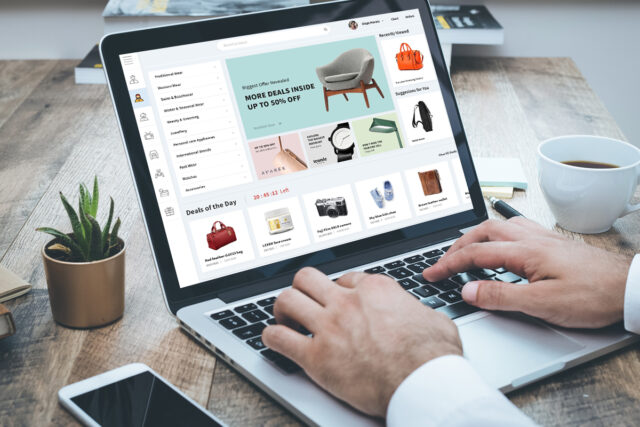A well-designed product gallery is crucial for any e-commerce site, as it serves as the first point of interaction between customers and your products. An effective gallery not only showcases your offerings but also enhances user experience, increases engagement, and drives conversions. Here’s how to design a high-impact product gallery for your e-commerce site.

Table of Contents
Toggle1. Prioritize High-Quality Images
The visual presentation of your products is paramount in e-commerce. Here’s how to ensure your images are top-notch:
- Use professional photography: Invest in high-quality images that showcase your products clearly and attractively. Consider multiple angles and detailed close-ups to give customers a comprehensive view.
- Optimize image sizes: While high resolution is important, ensure images are optimized for fast loading times. Use formats like JPEG or WebP and compress images without sacrificing quality.
- Consistent styling: Maintain a consistent style across all product images, including lighting, background, and angle. This uniformity builds brand identity and professionalism.
2. Implement a User-Friendly Layout
A clean and intuitive layout is essential for guiding customers through your product gallery. Consider the following:
- Grid layout: A grid layout allows for easy comparison between products. Use a clean grid format with sufficient white space to prevent clutter and improve readability.
- Filter and sort options: Enable customers to filter products by category, price, popularity, and other criteria. Sorting options help users quickly find what they are looking for, enhancing their shopping experience.
- Infinite scroll or pagination: Choose between infinite scrolling for seamless browsing or pagination to keep the page organized. Test both options to see which works best for your audience.
3. Incorporate Zoom and Quick View Features
Allowing customers to interact with your product images can significantly enhance their shopping experience:
- Image zoom functionality: Implement a zoom feature that lets users hover over images to see details up close. This is particularly important for products where texture and detail matter, such as clothing or accessories.
- Quick view option: Provide a quick view feature that allows users to see product details without leaving the gallery. This saves time and encourages users to explore more products.
4. Include Descriptive Captions and Information
Enhancing your product images with informative captions can guide customers toward making a purchase:
- Clear product titles: Ensure each product has a clear and concise title that accurately describes what it is.
- Brief descriptions: Include short descriptions highlighting key features and benefits. Use bullet points for easy readability.
- Price visibility: Clearly display product prices near the images, ensuring they are easy to spot without overwhelming the visual focus.
5. Utilize User-Generated Content
User-generated content (UGC) can add authenticity and social proof to your product gallery:
- Customer reviews and photos: Allow customers to submit photos of your products in use along with their reviews. Display these alongside your product images to enhance credibility and relatability.
- Social media integration: Showcase customer posts from social media platforms where they tag your products. This not only builds community but also inspires potential buyers with real-life applications of your products.
6. Optimize for Mobile Devices
With the increasing use of mobile devices for online shopping, ensuring your product gallery is mobile-friendly is essential:
- Responsive design: Use a responsive design that adapts to different screen sizes and orientations. Test your gallery on various devices to ensure a seamless experience.
- Touch-friendly interactions: Make sure touch interactions, such as zoom and swipe gestures, are intuitive and easy to use on mobile devices.
7. Include Clear Calls to Action
Encourage users to take action with strategically placed calls to action (CTAs):
- “Add to Cart” buttons: Ensure that CTAs are prominently displayed and easy to click, with contrasting colors that stand out against the background.
- Encouragement to explore: Use phrases like “See More” or “Shop the Collection” to guide customers to additional products, increasing the chances of cross-selling.
8. Regularly Update and Test Your Gallery
Continuously monitor and optimize your product gallery based on user feedback and analytics:
- A/B testing: Experiment with different layouts, images, and CTAs to determine what resonates best with your audience. Analyze conversion rates and user engagement to make informed adjustments.
- Fresh content: Regularly update your product gallery with new images, seasonal collections, and featured items to keep it dynamic and engaging.
Conclusion
Designing a high-impact product gallery is vital for capturing customer interest and driving sales in e-commerce. By focusing on high-quality visuals, user-friendly layouts, and interactive features, you can create an engaging shopping experience that encourages users to explore and purchase. Continuously test and optimize your gallery to ensure it meets the evolving needs of your customers, helping your e-commerce site thrive in a competitive marketplace.


No responses yet